Just like my mother, I thrive on projects. My latest project has turned out to be one that will keep me busy for years to come. It’s time to finally turn our scorched dead yard into something pretty and useful, so I am planting plants, some for landscaping and some for pure enjoyment. Sure, I’ve planted a handful of things from time to time, but the task of transforming the large yard was daunting and the desire to fully commit to it just hadn’t stuck. Well, I finally found my green thumb, or at least my perpetually dirty fingernails and feet. Welcome to my young garden.
This all started with the deliberate falling of a dead tree in our front yard. We beat it to the punch — the old hackberry was destined to fall on the house (specifically our son’s bedroom) with the next strong wind. Somehow the process of removing it got me inspired to plant a few things. And suddenly a little project became a full property focus.
I started on the entryway, where three beds of almost complete dirt had sat empty (except one yew and some annoying weeds) for far too long. Now they are filled with small shade plants that will someday be big plants. The beds have room to change — in fact one change was made today to save a new plant. We’ve had rain for the past 24 hours, and it turns out the water running off the roof was bombarding my poor little wood violet, trying to drown it in the process. The wood violet is now safely tucked away in a different bed, and I have buckets collecting any additional runoff. On our project list is adding gutters and rain barrel, when money allows. But in the meantime my wood violet may yet live, and for now that is what matters.
Our dogs and newly-adopted cats have been my gardening companions. When I’m in the front yard with the cats, the dogs are jealous and whiny. When I’m in the backyard with the dogs, the cats want to come outside. But they each have their area, and the cats are chaperoned (no hunting allowed).
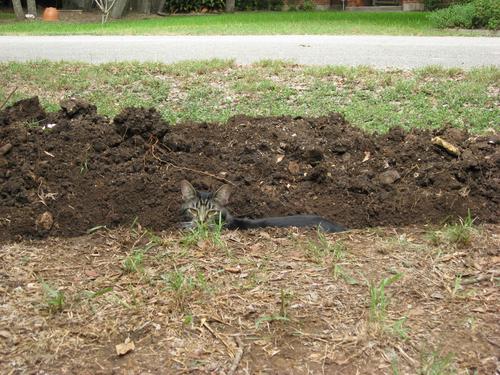
Tooga loves to garden with me, and she insists on coming outside whenever she sees me heading out there. Any hole I dig in the front yard, she is right there to test it out and make sure it is just right.
Even skittish Cricket, our kitten, has found her adventuresome side, though she still scurries back to the house or garage at every noise.
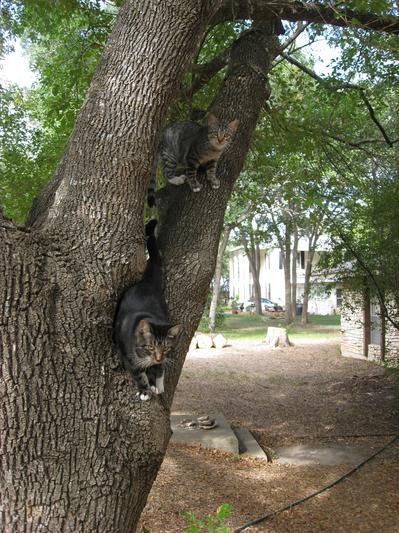
Tooga doesn’t notice toads if they act like garden rocks. The toads prefer it that way.
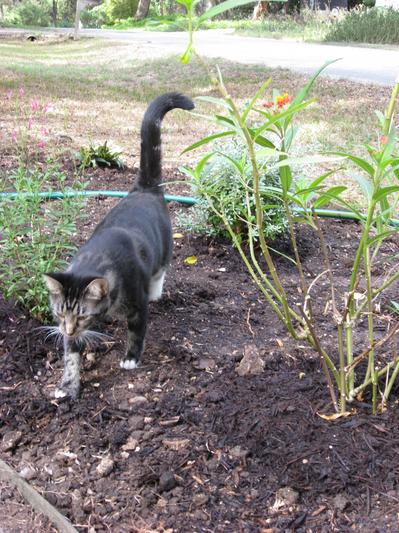
The garden is bringing in all sorts of wildlife already — toads, butterflies, lizards, skinks, caterpillars, wasps, birds, and squirrels. A few pest bugs have arrived, too, but nothing to bring alarm (well, except for the goldenball leadtree that was filled with fire ants).
I found an itty-bitty monarch caterpillar on the milkweed:
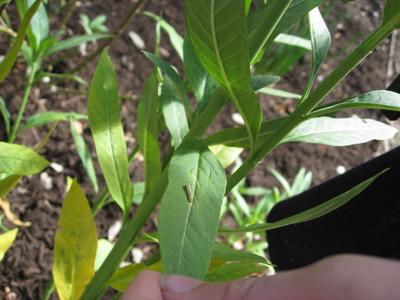 As one of my plant purchases, I chose a baby Dutchman’s pipevine, only to discover the next morning that it was half gone thanks to a big pipevine swallowtail caterpillar! That hungry caterpillar was awfully cute though.
As one of my plant purchases, I chose a baby Dutchman’s pipevine, only to discover the next morning that it was half gone thanks to a big pipevine swallowtail caterpillar! That hungry caterpillar was awfully cute though.
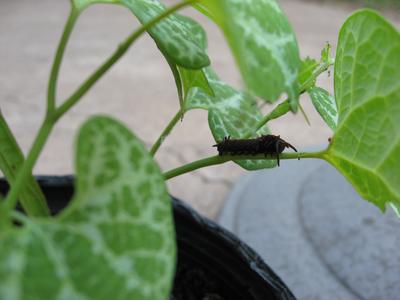 But I didn’t have enough plant to support it, so I took the caterpillar back to Natural Gardener’s so it could feast on their pipevine. And wow, was it happy. But my poor pipevine then got dragged by the dogs through the yard before I managed to get it planted — amazingly it’s actually growing, and it seems quite happy now.
But I didn’t have enough plant to support it, so I took the caterpillar back to Natural Gardener’s so it could feast on their pipevine. And wow, was it happy. But my poor pipevine then got dragged by the dogs through the yard before I managed to get it planted — amazingly it’s actually growing, and it seems quite happy now.
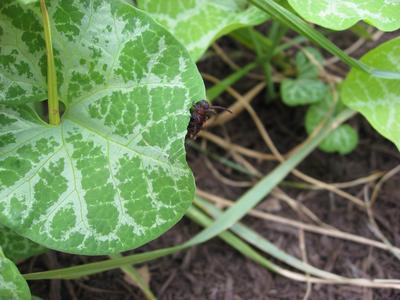 A toad made use right away of the toad bath we made .
A toad made use right away of the toad bath we made .
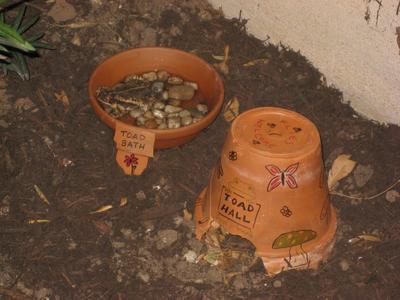 Below is a view of the butterfly garden before I put in the edging — the butterfly shape is at our kids’ request. I’m not going to overdo the edging in the yard, but I wanted to make sure the butterfly shape stayed. It was a pain to get those wings even! You can see the original and much smaller bed in the butterfly shape. The area along the fence and house, separated by a line of bricks, will be a bed we prepare for spring planting.
Below is a view of the butterfly garden before I put in the edging — the butterfly shape is at our kids’ request. I’m not going to overdo the edging in the yard, but I wanted to make sure the butterfly shape stayed. It was a pain to get those wings even! You can see the original and much smaller bed in the butterfly shape. The area along the fence and house, separated by a line of bricks, will be a bed we prepare for spring planting.
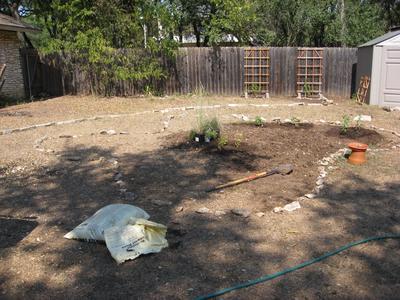
Next is the garden with the edging and some of the plants put in place. Michael helped dig out the bed, but I did the edging and the planting, giving myself a bit of tendonitis in my right elbow during the process.
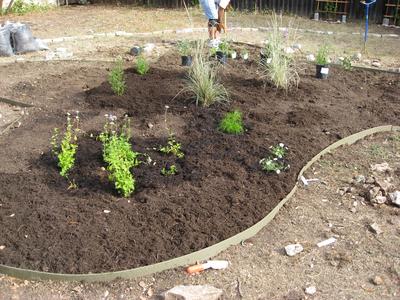 Turning our old wheelbarrow into a planter, I planted herbs and colorful annuals. I used some of that basil just this evening! Yum.
Turning our old wheelbarrow into a planter, I planted herbs and colorful annuals. I used some of that basil just this evening! Yum.
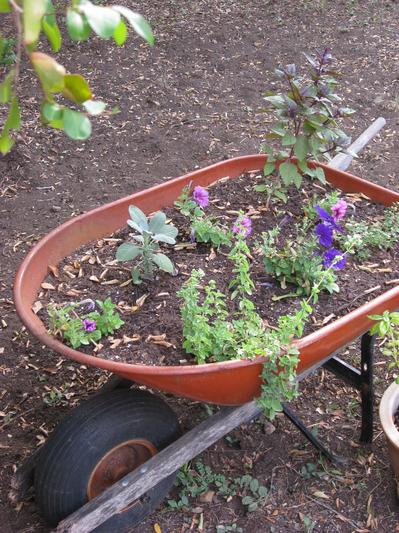 Eastern tiger swallowtails came to visit this weekend, and two danced and went off together.
Eastern tiger swallowtails came to visit this weekend, and two danced and went off together.
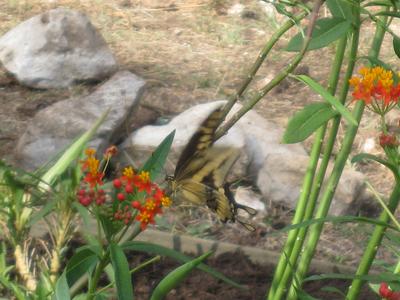
All in all, it’s been fun. I seem to be spending most of my waking hours thinking about plants. The yard is officially certified as a wildlife habitat, and now I’m trying to bring in as many native Texas plants as I can to help get the yard certified as a Texas Wildscape and a Best of Texas habitat. Someday our yard will look very different. Right now it’s in its baby stages.
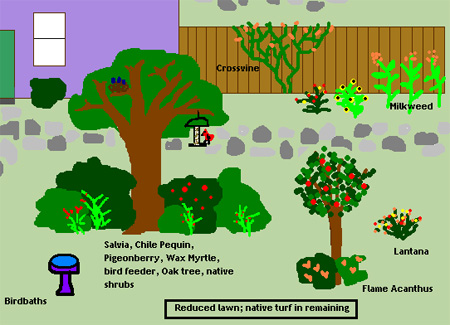
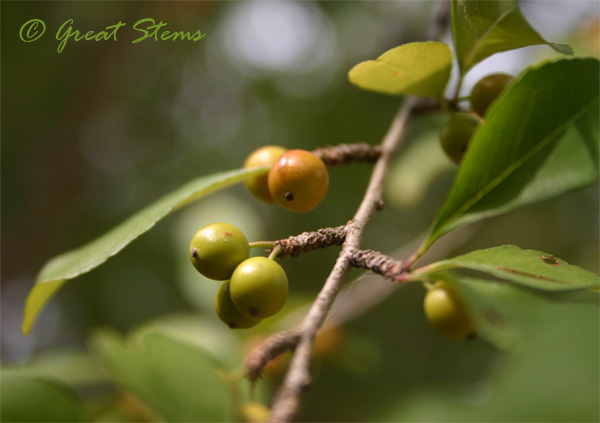
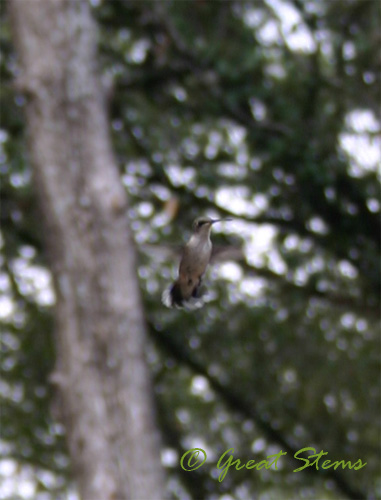
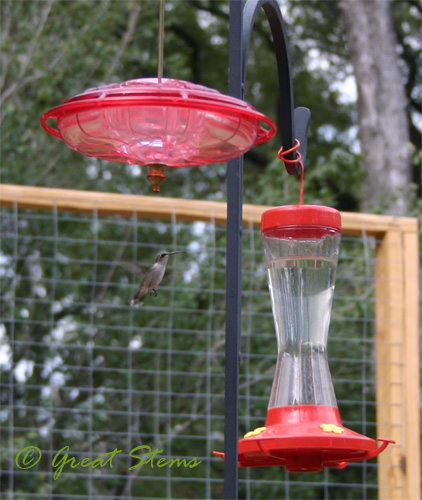
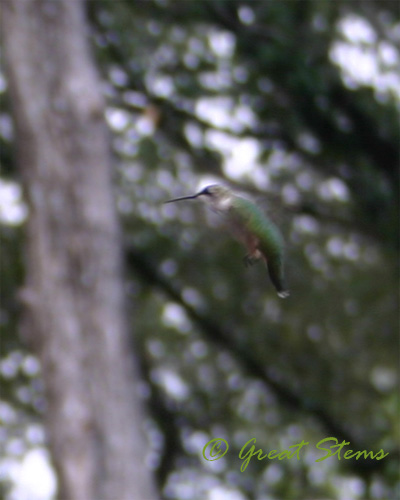
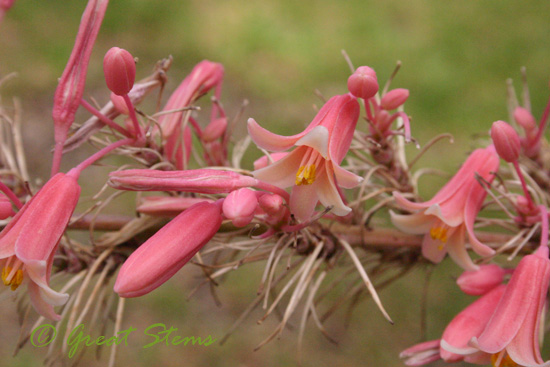
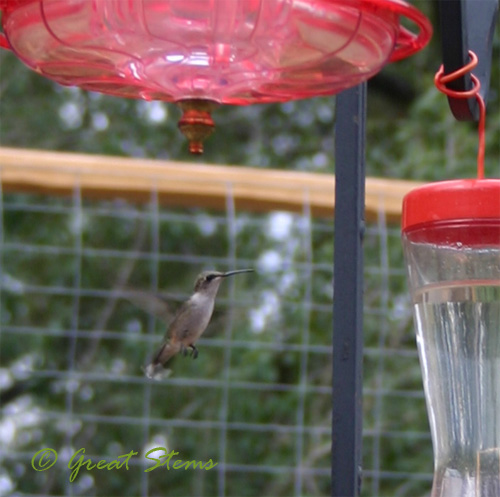
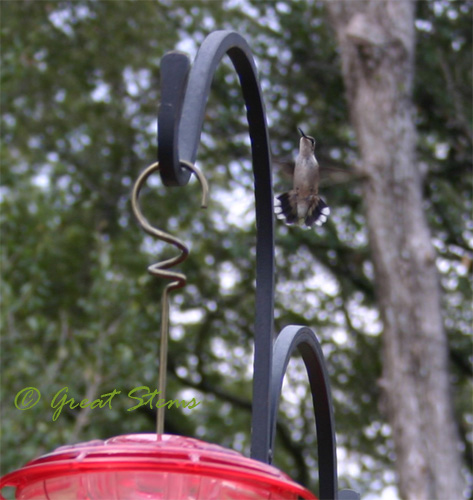



 As one of my plant purchases, I chose a baby Dutchman’s pipevine, only to discover the next morning that it was half gone thanks to a big pipevine swallowtail caterpillar! That hungry caterpillar was awfully cute though.
As one of my plant purchases, I chose a baby Dutchman’s pipevine, only to discover the next morning that it was half gone thanks to a big pipevine swallowtail caterpillar! That hungry caterpillar was awfully cute though. But I didn’t have enough plant to support it, so I took the caterpillar back to
But I didn’t have enough plant to support it, so I took the caterpillar back to  A toad made use right away of the toad bath we made .
A toad made use right away of the toad bath we made . Below is a view of the butterfly garden before I put in the edging — the butterfly shape is at our kids’ request. I’m not going to overdo the edging in the yard, but I wanted to make sure the butterfly shape stayed. It was a pain to get those wings even! You can see the original and much smaller bed in the butterfly shape. The area along the fence and house, separated by a line of bricks, will be a bed we prepare for spring planting.
Below is a view of the butterfly garden before I put in the edging — the butterfly shape is at our kids’ request. I’m not going to overdo the edging in the yard, but I wanted to make sure the butterfly shape stayed. It was a pain to get those wings even! You can see the original and much smaller bed in the butterfly shape. The area along the fence and house, separated by a line of bricks, will be a bed we prepare for spring planting.

 Eastern tiger swallowtails came to visit this weekend, and two danced and went off together.
Eastern tiger swallowtails came to visit this weekend, and two danced and went off together.